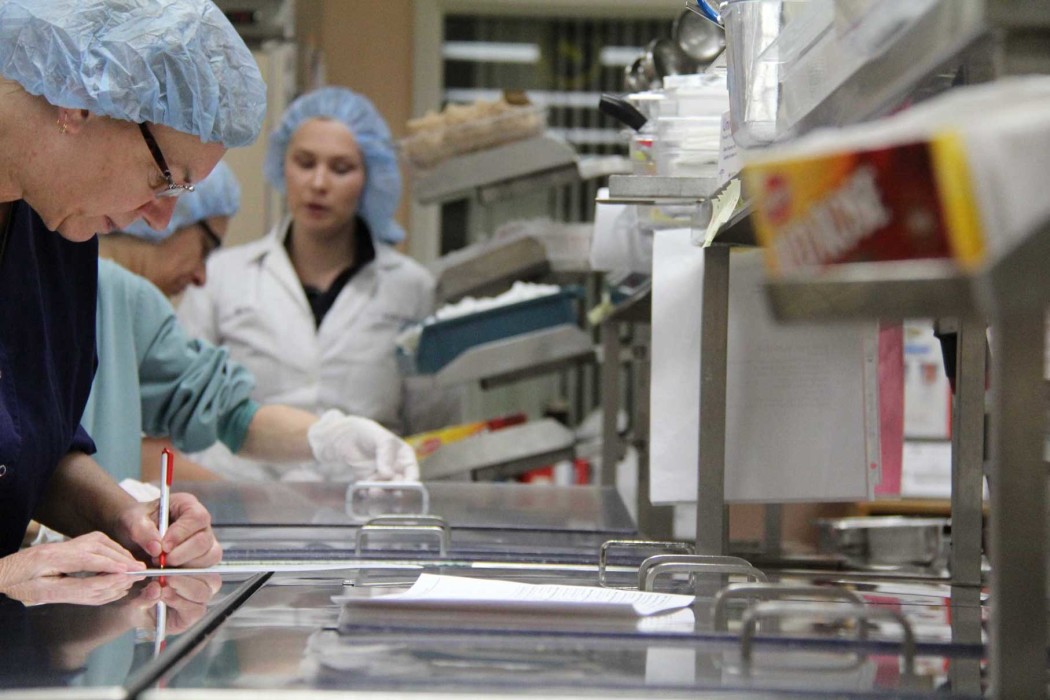Foodservice and the satisfied Patient
In my job I get the privilege of traveling and seeing all sorts of operations in healthcare, assisted living and memory care facilities. I always spend a portion of my time talking to the directors asking what their vision is for the future of meal prep and delivery at their facility or healthcare system. Almost always the answer has to do with creating a meal program that gets the patient to eat and be happy with the service and quality of the meals and snacks. I hear some very interesting soliloquies on how centralized meal service is the answer or how decentralized prep and assembly is the only way to provide responsive patient requests. I’ve gotten schooled on how room service saved a department and how room service is a disaster that is doomed to failure. I’ve seen how a very sophisticated renovation supported by the most current equipment and technology looks but just because a chicken has wings don’t mean it can fly,does it? Sometimes it’s the simple customer focused process, implemented with little capital investment that answers the mail.
What I’ve learned by listening carefully and observing are the following things
- Successful FSDs know the answer to the following questions:
- What are the real objectives to open the doors of the kitchen everyday? Why do we come to work?
- Does the work we do make any differences to patient care or healing? If so what is that difference? (Yes we know patients need to eat to heal but does our service really encourage and improve the intake?)
- What is the gold standard for our facility and the industry?
- Do our services and processes accommodate food services/nursing convenience or the patient?
- What is the true cost of the benefit we provide?
- If we could do anything right now to Improve our output what would that be?
- If I can’t get resources to build the perfect program, how will we use what we have to improve towards the ultimate gold standard.
- The best FSD’s know what the trends are in healthcare Foodservice and can recognize which ones are here to stay.
- Smart FSD’s know their facility leadership vision and how their department feeds the vision. They also are very aware of what the C-suite knows and thinks of the trends.
- A good FSD will ask what is the trend accomplishing, why is that important, and how is my current FS operation stacking up to the trend.
- Top of the line FSDs figure out how to adapt to lasting trends and propose a plan for bringing the trend into the facility in a logical business plan. Or, they recognize that the trend might not meet their needs but they isolate the trend focus and objective to show how they can achieve the same results in their existing program or one that they have morphed to meet their available resources.
What I’ve learned is that every program should embrace and practice these simple ideas:
- Everyone’s a VIP. The patient should always feel they are the most special person in the facility.
- The process should be simple and efficient. If you can’t draw it out or explain in a few paragraphs to a non Foodservice colleague then it’s probably too complicated.
- Technology should not take the place of human contact.
- Choice is important on a menu.
- Letting the patient feel as though they have some control over serving time is a bonus.
- Whether or not your department is part of the patient survey process is no excuse for not knowing what patients think of your services.
- Don’t make a promise that you can’t keep.
- Make any changes a team effort and use your own staff once in a while to be a secret shopper.
Making a difference has to mean making a conscious decision to be knowledgableabout the industry, your leadership and operational capabilities. It means being ahead of or riding the tide of the best in industry. It means an eating, happy patient or client.











